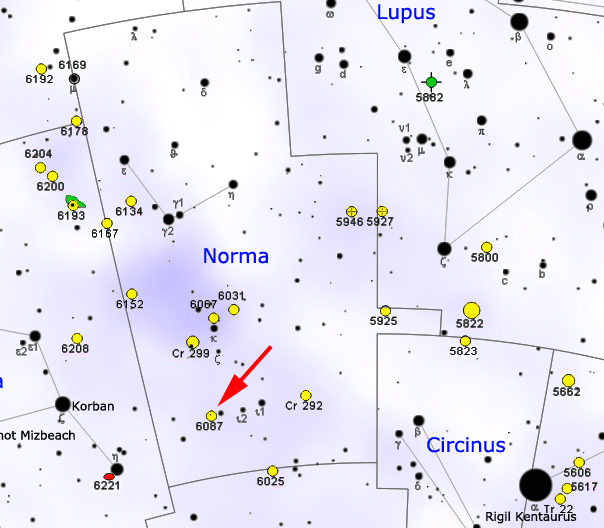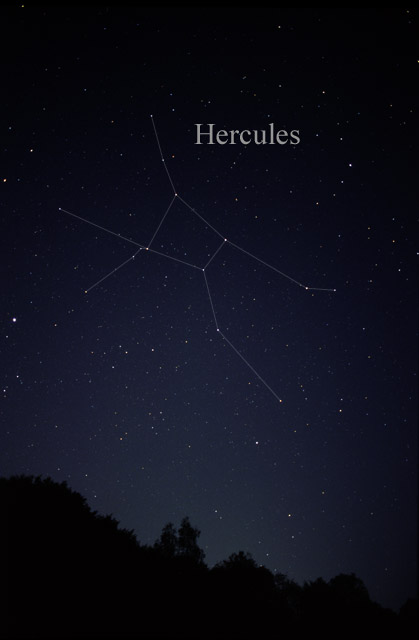|
List Of NGC Objects (6001–7000)
This is a list of NGC objects 6001–7000 from the New General Catalogue (NGC). The astronomical catalog An astronomical catalog or catalogue is a list or tabulation of astronomical objects, typically grouped together because they share a common type, morphology, origin, means of detection, or method of discovery. The oldest and largest are star c ...ue is composed mainly of star clusters, nebulae, and galaxies. Other objects in the catalogue can be found in the other subpages of the list of NGC objects. The constellation information in these tables is taken from ''The Complete New General Catalogue and Index Catalogue of Nebulae and Star Clusters by J. L. E. Dreyer'', which was accessed using the "VizieR Service". Galaxy types are identified using the ''NASA/IPAC Extragalactic Database''. The other data of these tables are from the SIMBAD Astronomical Database unless otherwise stated. 6001–6100 6101–6200 6201–6300 6301–6400 6401–6500 6501–6600 ... [...More Info...] [...Related Items...] OR: [Wikipedia] [Google] [Baidu] |
New General Catalogue
The ''New General Catalogue of Nebulae and Clusters of Stars'' (abbreviated NGC) is an astronomical catalogue of deep-sky objects compiled by John Louis Emil Dreyer in 1888. The NGC contains 7,840 objects, including galaxies, star clusters and emission nebulae. Dreyer published two supplements to the NGC in 1895 and 1908, known as the ''Index Catalogues'' (abbreviated IC), describing a further 5,386 astronomical objects. Thousands of these objects are best known by their NGC or IC numbers, which remain in widespread use. The NGC expanded and consolidated the cataloguing work of William and Caroline Herschel, and John Herschel's ''General Catalogue of Nebulae and Clusters of Stars''. Objects south of the celestial equator are catalogued somewhat less thoroughly, but many were included based on observation by John Herschel or James Dunlop. The NGC contained multiple errors, but attempts to eliminate them were made by the ''Revised New General Catalogue'' (RNGC) by Jack W. Sulent ... [...More Info...] [...Related Items...] OR: [Wikipedia] [Google] [Baidu] |
Interacting Galaxy
Interacting galaxies (''colliding galaxies'') are galaxies whose gravitational fields result in a disturbance of one another. An example of a minor interaction is a satellite galaxy disturbing the primary galaxy's spiral arms. An example of a major interaction is a galactic collision, which may lead to a galaxy merger. Satellite interaction A giant galaxy interacting with its satellites is common. A satellite's gravity could attract one of the primary's spiral arms. Alternatively, the secondary satellite can dive into the primary galaxy, as in the Sagittarius Dwarf Elliptical Galaxy diving into the Milky Way. That can possibly trigger a small amount of star formation. Such orphaned clusters of stars were sometimes referred to as "blue blobs" before they were recognized as stars. Galaxy collision Colliding galaxies are common during galaxy evolution. The extremely tenuous distribution of matter in galaxies means these are not collisions in the traditional sense of the wor ... [...More Info...] [...Related Items...] OR: [Wikipedia] [Google] [Baidu] |
NGC 6093
Messier 80 (also known as M80 or NGC 6093) is a globular cluster in the constellation Scorpius. It was discovered by Charles Messier in 1781, being one of his first discoveries. This star cluster is, as to its angle from the solar system, midway between α Scorpii (Antares) and β Scorpii in a field in the Milky Way Galaxy that is rich in nebulæ. With low levels of light pollution it can be viewed below the 67th parallel north with modest amateur telescopes, appearing as a mottled ball of light. It has an apparent angular diameter of about 10 arcminutes. Since it is away, this translates into a true (spatial) diameter of about 95 light-years. It contains several hundred thousand stars, and ranks among the densest globular clusters in the Milky Way. It is at more than twice the distance of the Galactic Center in regions considered the Galactic halo. It hosts relatively many ''blue stragglers'', stars that appear to be much younger than the cluster. It is thought the ... [...More Info...] [...Related Items...] OR: [Wikipedia] [Google] [Baidu] |
Norma (constellation)
Norma is a small constellation in the Southern Celestial Hemisphere between Ara and Lupus, one of twelve drawn up in the 18th century by French astronomer Nicolas-Louis de Lacaille and one of several depicting scientific instruments. Its name is Latin for normal, referring to a right angle, and is variously considered to represent a rule, a carpenter's square, a set square or a level. It remains one of the 88 modern constellations. Four of Norma's brighter stars—Gamma, Delta, Epsilon and Eta—make up a square in the field of faint stars. Gamma2 Normae is the brightest star with an apparent magnitude of 4.0. Mu Normae is one of the most luminous stars known, with a luminosity between a quarter million and one million times that of the Sun. Four star systems are known to harbour planets. The Milky Way passes through Norma, and the constellation contains eight open clusters visible to observers with binoculars. The constellation also hosts Abell 3627, also called th ... [...More Info...] [...Related Items...] OR: [Wikipedia] [Google] [Baidu] |
NGC 6087
NGC 6087 (also known as Caldwell 89 or the S Normae Cluster) is an open cluster of 40 or more Burnham's ''Celestial Handbook'' gives the number 40, though other studies go as high as 349; see Stephen James O'Meara, ''The Caldwell Objects'', Cambridge University Press, 2002, p. 351. stars centered on the Cepheid variable S Normae in the constellation Norma Norma may refer to: * Norma (given name), a given name (including a list of people with the name) Astronomy *Norma (constellation) * 555 Norma, a minor asteroid *Cygnus Arm or Norma Arm, a spiral arm in the Milky Way galaxy Geography *Norma, Lazi .... At a distance of about 3500 ly and covering a field of almost one quarter of a degree, the stars range from seventh- to eleventh-magnitude, the brightest being 6.5 magnitude S Normae. The aggregate visual magnitude of the cluster is about 5.4. Spectral analysis of the radial motion of the stars confirm that S Normae is a member of the cluster, and the period/luminosity relatio ... [...More Info...] [...Related Items...] OR: [Wikipedia] [Google] [Baidu] |
NGC 6052
NGC 6052 is a pair of galaxies in the constellation of Hercules. It was discovered on 11 June 1784 by William Herschel. It was described as "faint, pretty large, irregularly round" by John Louis Emil Dreyer, the compiler of the New General Catalogue. The two components of NGC 6052 are designated NGC 6052A and NGC 6052B, respectively. The two, attracted by each other's gravity, have collided and are interacting with each other. NGC 6052 is currently in a late stage of merging, where the shape of the two galaxies is not distinctly defined. SN 1982aa, a powerful radio supernova, was detected in NGC 6052. Gallery NGC6052 - HST - Potw1909a.jpg, NGC 6052 observed by Hubble with its WFPC2 camera. See also * Hercules (Chinese astronomy) * List of largest galaxies * List of nearest galaxies * List of NGC objects (6001–7000) References Notes External links * {{DEFAULTSORT:NGC 6052 209 Year 209 ( CCIX) was a common year starting on Sunday (link will display the full ca ... [...More Info...] [...Related Items...] OR: [Wikipedia] [Google] [Baidu] |
Hercules (constellation)
Hercules is a constellation named after Hercules, the Roman mythology, Roman mythological hero adapted from the Greek mythology, Greek hero Heracles. Hercules was one of the 48 constellations listed by the second-century astronomer Ptolemy, and it remains one of the IAU designated constellations, 88 modern constellations today. It is the fifth-largest of the modern constellations and is the largest of List of brightest stars, the 50 which have no stars brighter than apparent Magnitude (astronomy), magnitude +2.5. Characteristics Hercules is bordered by Draco (constellation), Draco to the north; Boötes, Corona Borealis, and Serpens, Serpens Caput to the east; Ophiuchus to the south; Aquila (constellation), Aquila to the southwest; and Sagitta, Vulpecula, and Lyra to the west. Covering 1225.1 square degrees and 2.970% of the night sky, it ranks fifth among the 88 constellations in size. The three-letter abbreviation for the constellation, as adopted by the International Astro ... [...More Info...] [...Related Items...] OR: [Wikipedia] [Google] [Baidu] |
NGC 6043
NGC 6043 is a lenticular galaxy located about 444 million light-years away in the constellation Hercules. NGC 6043 was discovered by astronomer Lewis Swift on June 27, 1886. The galaxy is a member of the Hercules Cluster. See also * List of NGC objects (6001–7000) This is a list of NGC objects 6001–7000 from the New General Catalogue (NGC). The astronomical catalog An astronomical catalog or catalogue is a list or tabulation of astronomical objects, typically grouped together because they share a comm ... References External links Hercules (constellation) Lenticular galaxies 6043 57019 Astronomical objects discovered in 1886 Hercules Cluster Discoveries by Lewis Swift {{lenticular-galaxy-stub ... [...More Info...] [...Related Items...] OR: [Wikipedia] [Google] [Baidu] |
NGC 6027e
NGC 6027e is a tidal tail of NGC 6027, not an individual galaxy, that is part of Seyfert's Sextet, a compact group of galaxies, which is located in the constellation Serpens Serpens ( grc, , , the Serpent) is a constellation in the northern celestial hemisphere. One of the 48 constellations listed by the 2nd-century astronomer Ptolemy, it remains one of the 88 modern constellations designated by the International .... See also * NGC 6027 * NGC 6027a * NGC 6027b * NGC 6027c * NGC 6027d References External links HubbleSite NewsCenter: Pictures and description Serpens Barred spiral galaxies 6027e 56579 10116 NED06 {{Spiral-galaxy-stub ... [...More Info...] [...Related Items...] OR: [Wikipedia] [Google] [Baidu] |
Spiral Galaxy
Spiral galaxies form a class of galaxy originally described by Edwin Hubble in his 1936 work ''The Realm of the Nebulae''Alt URL pp. 124–151) and, as such, form part of the . Most spiral galaxies consist of a flat, rotating containing s, gas and dust, and a central concentration of stars known as the |
NGC 6027d
NGC 6027d is a barred spiral galaxy that is strictly a visual member of Seyfert's Sextet, a compact group of galaxies, which is located in the constellation Serpens Serpens ( grc, , , the Serpent) is a constellation in the northern celestial hemisphere. One of the 48 constellations listed by the 2nd-century astronomer Ptolemy, it remains one of the 88 modern constellations designated by the International .... NGC 6027d is not interacting with the other galaxies in the cluster, but is in the background and just happens to be in the same line of sight. The galaxy is nearly 700 million light years away from the interacting group and is believed to be extremely large in size. One supernova has been observed in NGC 6027d: SN 1998fe (type unknown, mag. 18). Retrieved 30 March 2023. ... [...More Info...] [...Related Items...] OR: [Wikipedia] [Google] [Baidu] |
NGC 6027c
NGC 6027c is a barred spiral galaxy that is part of Seyfert's Sextet, a compact group of galaxies, which is located in the constellation Serpens Serpens ( grc, , , the Serpent) is a constellation in the northern celestial hemisphere. One of the 48 constellations listed by the 2nd-century astronomer Ptolemy, it remains one of the 88 modern constellations designated by the International .... See also * NGC 6027 * NGC 6027a * NGC 6027b * NGC 6027d * NGC 6027e * Seyfert's Sextet References External links ''HubbleSite NewsCenter'': Pictures and description Serpens Barred spiral galaxies 6027c 56578 10116 NED04 {{Spiral-galaxy-stub ... [...More Info...] [...Related Items...] OR: [Wikipedia] [Google] [Baidu] |





